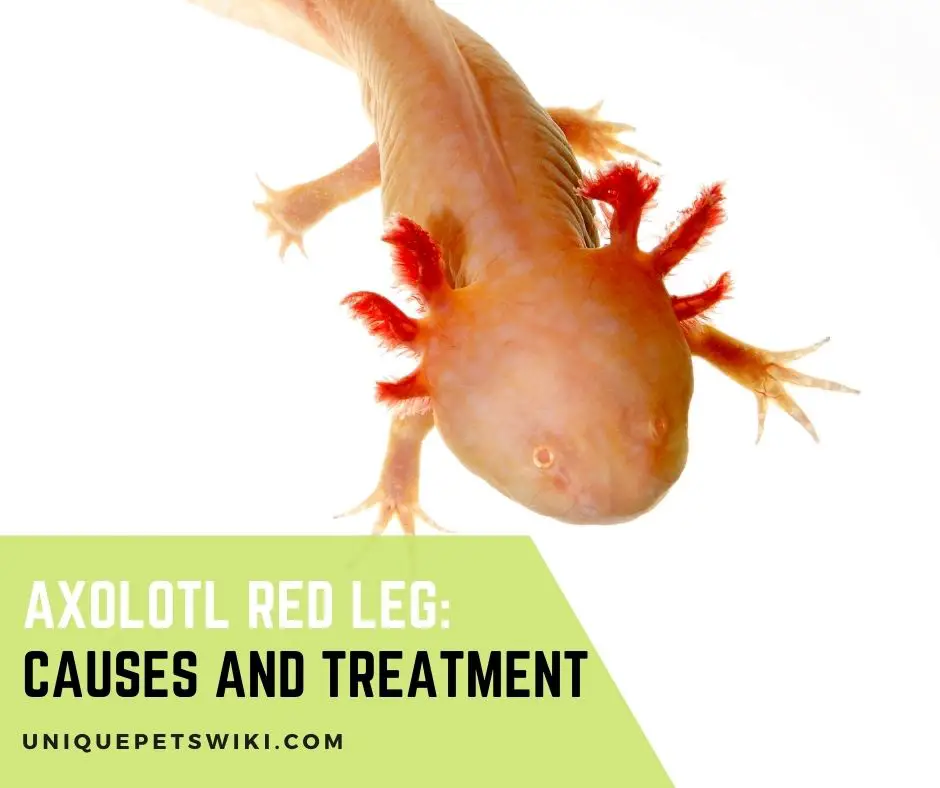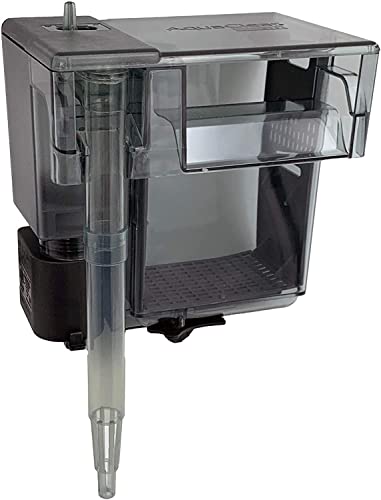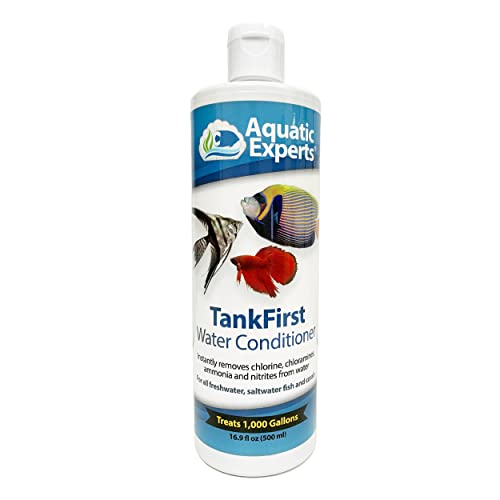Axolotls make excellent pets. Living situations and environmental variables, on the other hand, make them vulnerable to a variety of health issues.
Axolotl red leg is a gram-negative bacterial infection that affects axolotls. It’s critical to understand the causes of red leg and how to treat it.
The name “red leg” comes from the redness under the leg, as the name indicates. It’s a bacterial infection, not merely capillary irritation under the leg.
As a result, owners of axolotls should be aware of the causes, treatment, prevention, and implications of axolotl red leg.
The purpose of this article is to educate readers on the causes and treatment of axolotl red leg. The signs, stages, and variations of red leg syndrome will also be discussed in the article.
So, read the entire post to learn more about the red leg condition and how to keep your axolotls safe from it.
Contents
What Does Axolotl Red Leg Look Like?
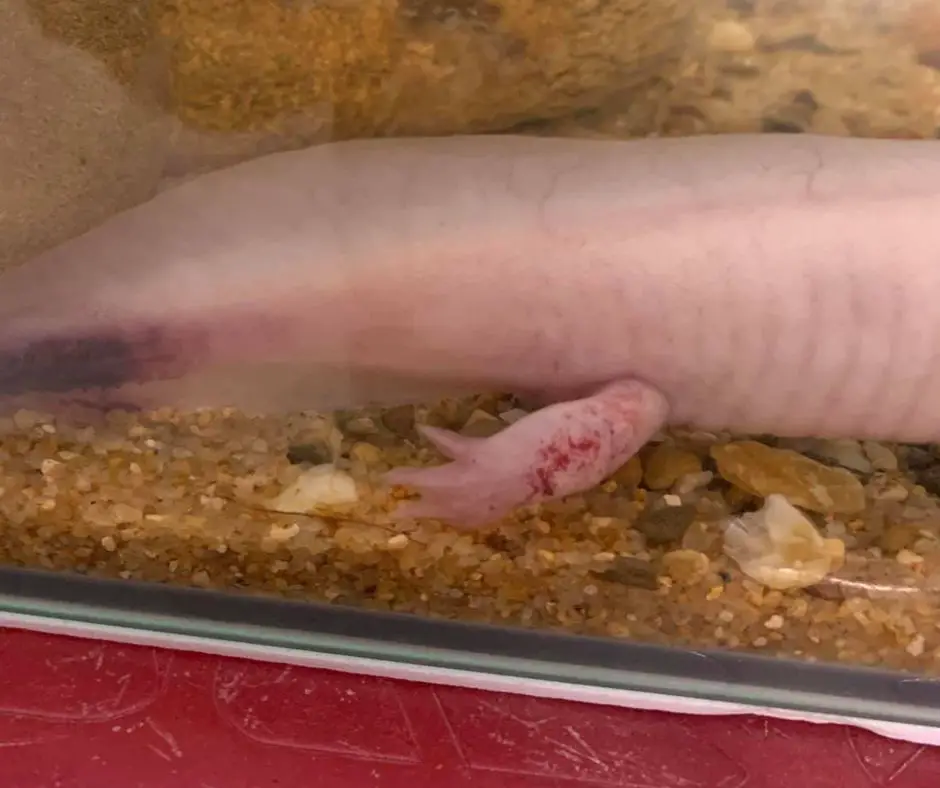
The red leg is caused by the bacterium Aeromonas hydrophila. The bacterium can be found in contaminated water and food.
The growth of these bacteria is triggered by a rise in water temperature. When germs enter the bloodstream of an axolotl, it causes blood vessels to stretch.
Axolotl red leg is treatable, and it’s simple to do so if detected early. Anemia, tiredness, weight loss, and skin soreness under the leg and abdomen are some of the signs and symptoms.
Because the main cause is poor water quality, it is critical to replace the water on a regular basis to maintain the axolotls’ health.
Also read: How To Cycle Tank For Axolotl: 7 Steps for Beginners
Red-leg Syndrome
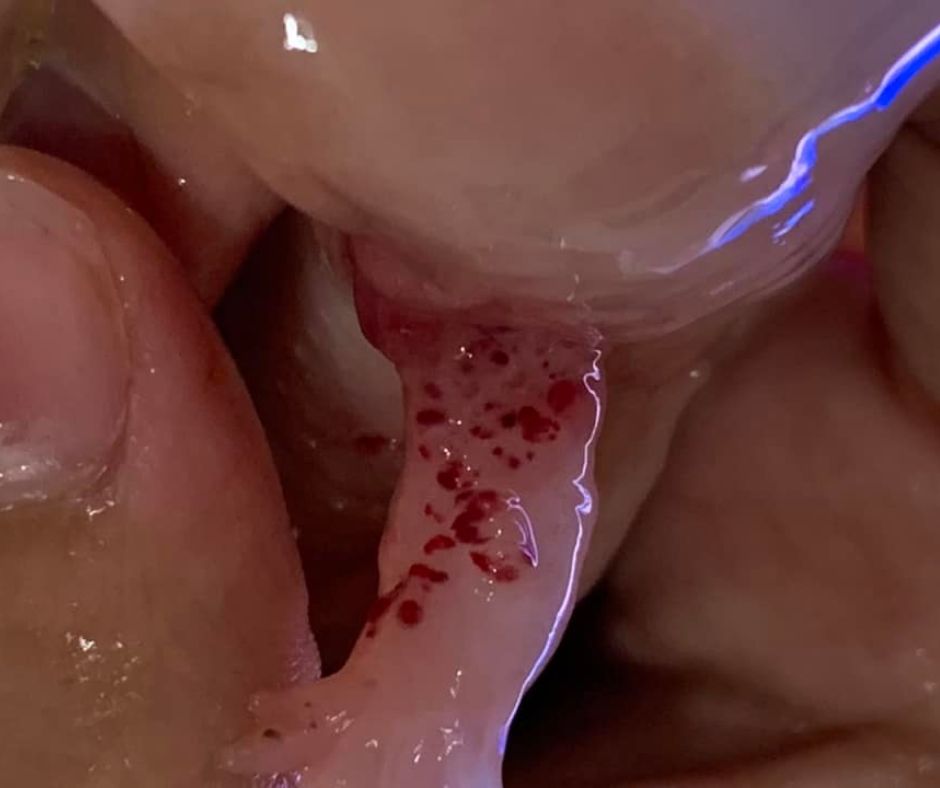
Red-leg syndrome is also referred to as septicemia. Because germs transfer toxins into the bloodstream, resulting in blood poisoning.
Toxins in axolotls mostly harm the skin, resulting in dermato-septicemia. The axolotl, on the other hand, may die if the toxins reach its vital organs.
Although Aeromonas bacteria are always present in tank water, they do not always induce red leg syndrome.
Axolotls’ immune systems are weakened as a result of irregular water parameters that cause stress. As a result, red leg syndrome is more likely when the immune system is suppressed.
Also read: Full Requirements & Water Conditions for Axolotl in Captivity
Axolotl Red Leg Symptoms
The severity and condition of the infection determine the symptoms of red leg syndrome. The symptoms and infection may not be severe if the water quality is poor, and bacteria are abundant.
When an axolotl is stressed, however, the bacteria can quickly overwhelm its immune system, resulting in devastating consequences.
Common signs of axolotl red leg syndrome include lethargy, weight loss, anemia, skin soreness, internal bleeding, neurological dysfunction, hemorrhages on body organs, and loss of appetite.
Deep skin sores and hemorrhages are caused by capillary dilatation and stretching.
What Causes Red-Leg Syndrome?
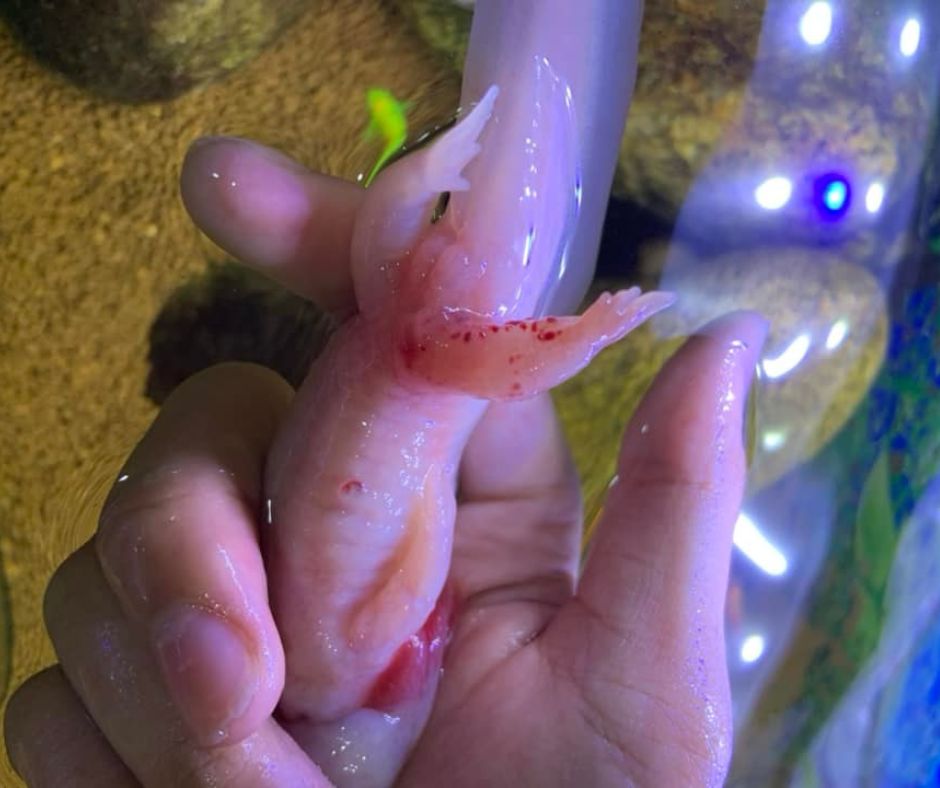
Red-leg syndrome is caused by contaminated water and food. The proliferation of bacteria, particularly Aeromonas bacteria, is aided by poor food and water quality.
The infection is also considered airborne since axolotls can pick up the bacteria by gulping air from the water’s surface.
Warm water encourages germs to grow and proliferate, resulting in red-leg syndrome.
Axolotls grow anxious as water temperatures rise because they require a cool environment to live a healthy life. As a result, bacteria multiply and take control of the axolotl’s immune system.
Also read: How To Keep An Axolotl Tank Cold
How to Diagnose Red-Leg?
The red leg can be diagnosed by its signs and symptoms. The symptoms of dermato-septicemia, on the other hand, are identical to those of dermatitis.
As a result, a veterinarian must inspect and analyze the signs in order to confirm the diagnosis.
The red leg is often followed by necrosis of the liver and spleen cells in severe cases. The dead cells in an axolotl’s liver, spleen, and other organs can be seen by a veterinarian.
To confirm the presence of an infectious agent in the blood, he or she will undertake blood or fluid testing.
A veterinarian can also culture blood to see if certain germs thrive on agar. Infection and inflammation caused by Pseudomonas and Salmonella in axolotls with red leg disease-like lesions.
As a result, a differential diagnosis is required in order to provide the appropriate treatment based on the etiology of the infection.
Axolotl Red Leg Treatment
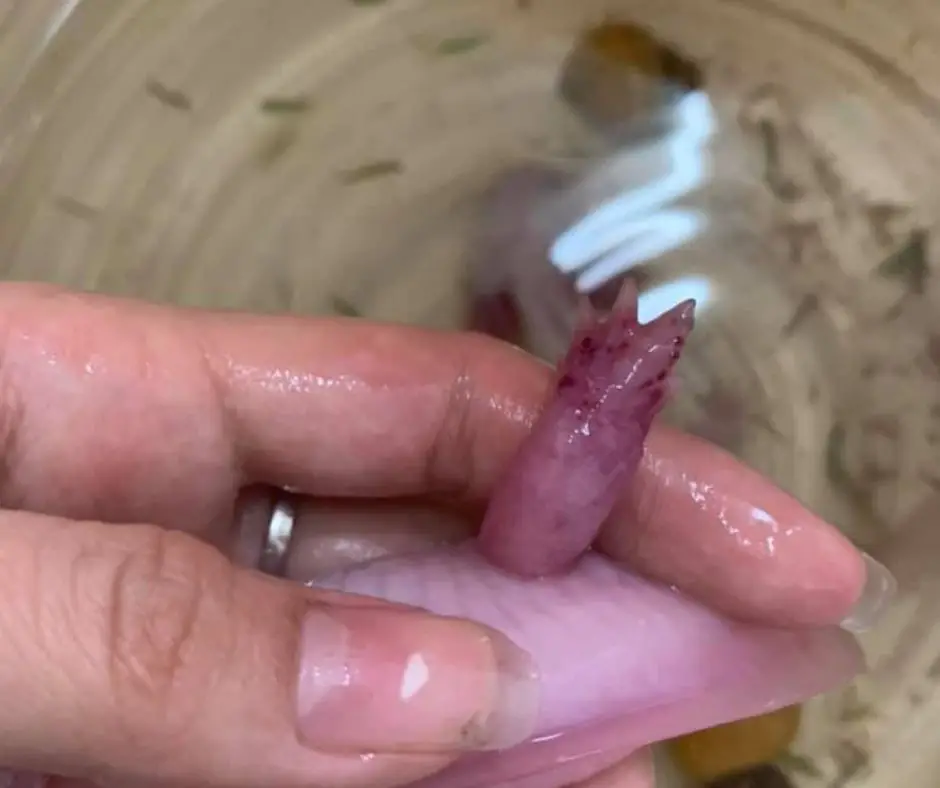
As soon as the diagnosis is confirmed, the therapy for the red leg must begin. The red leg infection is contagious, and it can infect other healthy axolotls in the tank.
To prevent the spread of infection, the first step is to quarantine affected axolotls.
To prevent additional complications, see a veterinarian for an appropriate diagnosis and treatment of the red leg.
An axolotl may be given analgesics, anti-inflammatory medicines, and antibiotics, depending on the severity of the infection.
It is vital to provide a healthy and nutritious diet to axolotls before administering antibiotics to improve their immune system.
Antibiotics will now be prescribed by a veterinarian to treat the bacterial infection. Erythromycin injections are commonly used to treat red leg syndrome.
AquaClear, Fish Tank Filter
- Aquarium filtration system that offers superior contact time with filter media and energy efficient pump lowers operating costs
- Quick and easy installation; we recommend that you clean aquarium filter every 2 weeks for maximum operation and efficiency
- Provides optimal mechanical; chemical; and biological filtration
- Comes equipped with AquaClear Foam; Activated Carbon Filter and BioMax and Cycle Guard for superior water quality
- Filtration volume is up to 7 times larger than comparable fish tank filters
Last update on 2022-12-29 / Affiliate links / Images from Amazon Product Advertising API
What Happens if Axolotl Red Leg Untreated?
The red leg, as previously stated, is contagious and can be transmitted to other animals through direct or indirect contact.
Due to bacterial poisoning of the blood, the red leg is also known as septicemia. When bacteria enter the bloodstream, they begin to produce toxins that harm the cells.
The red leg must be treated as soon as possible since the poisons can be lethal if they reach the vital organs. With time, the open skin sores on the skin deepen.
As a result, internal and external bleeding of organs and membranes may cause the axolotl to die.
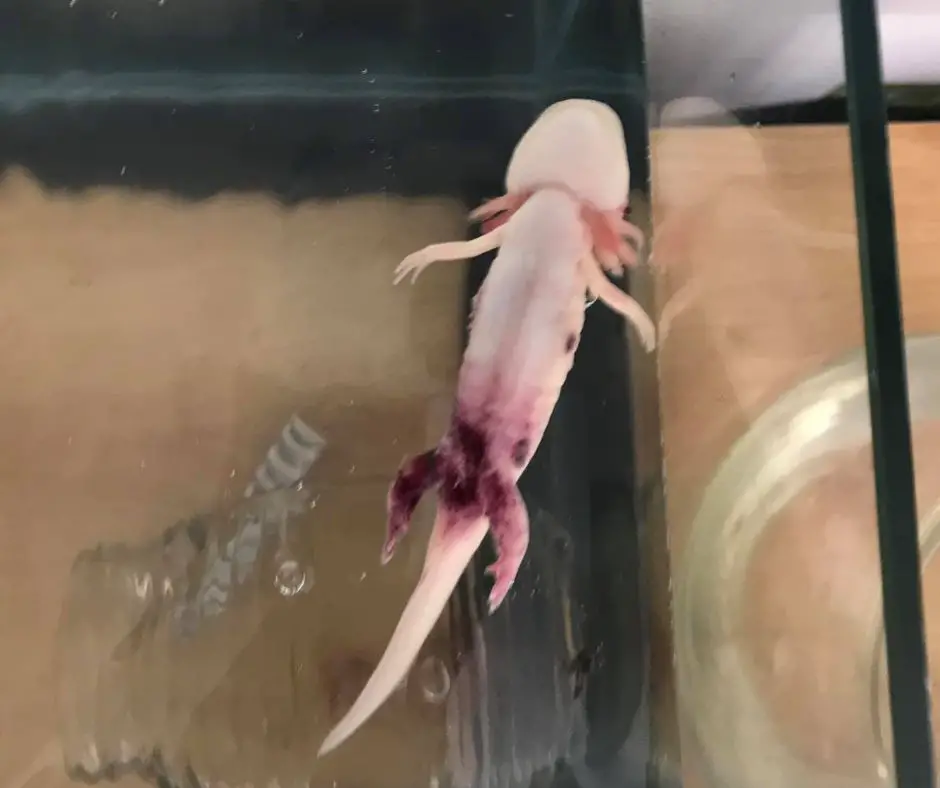
How to Prevent Axolotl Red Leg?
The red leg is a distressing condition for both pet owners and pets. It causes axolotls’ skin and epithelium to deteriorate, making them unattractive.
It is vital to take precautions to avoid an infection attack in the tank.
The first step is to separate the infected from the non-infected axolotls. Make sure that the water and feeding equipment isn’t shared by infected and non-infected axolotls.
To prevent bacteria from growing in water, keep it clean and cool.
Food residues and organic compounds in the tank pollute the water and encourage bacteria development. To avoid this, change the water regularly and keep the axolotls’ habitat clean.
Top axolotls need a better diet to keep their immune systems healthy and combat invading diseases.
TankFirst Complete Aquarium Water Conditioner
- NO AWFUL SMELL! The problem with some other aquarium water conditioners is that they smell horrible. Hobbyists pour these stinky products into their aquariums filled with their favorite aquatic pets and, YES, fish can smell! Our TankFirst water conditioner SOLVES THIS PROBLEM by using a natural additive that is just as effective without the foul odor. Your fish never have to suffer again!
- CUTTING EDGE FORMULA! Makes tap water INSTANTLY SAFE by removing chlorine, and chloramines; it also detoxifies ammonia. Our complete premium conditioner is perfect for all freshwater, marine, and reef aquariums. Our premium 16.9-ounce bottle treats 1,000 gallons. Use 1 capful or 1 teaspoon per 10 gallons.
- SUPERIOR PERFORMANCE! Our Premium Water Conditioner is PROVEN and TRUSTED for use with all freshwater and saltwater species including live corals and other invertebrates such as shrimps and snails. Even THE MOST SENSITIVE FISH ARE SAFE and it is the perfect choice for FRESHWATER SHRIMP and live planted aquariums and as a betta water conditioner.
- REMARKABLE RESULTS! Use our TankFirst fish tank water conditioner when adding water lost by evaporation, during water changes, as well as when ammonia and/or nitrite levels are measurable. For exact details of how to use our water conditioner to remove ammonia see description below.
- EASY TO USE! Our formula is very forgiving to adding a little too much. Imprecise measuring and small spills won't adversely affect your aquarium or your fish.
Last update on 2022-12-28 / Affiliate links / Images from Amazon Product Advertising API
FAQs
How do you treat a red axolotl leg?
Antibiotics such as erythromycin and nitrofurazone can be used to treat the red leg. In severe cases, a veterinarian may prescribe anti-inflammatory medications.
Aside from that, precautions must be taken to prevent infectious organisms from reentering the bloodstream.
Is red leg disease fatal?
Yes, if left untreated, a red leg can be fatal. Aeromonas hydrophila multiplies in the bloodstream and contaminates it by releasing toxins.
These toxins kill cells and can kill axolotls if they get into essential organs. Necrosis also causes dead cells to appear in the spleen and liver.
What is a red leg?
Aeromonas hydrophila causes reg leg, which is a bacterial infection. The dilatation and stretching of capillaries cause the abdomen and legs to turn red, as the term implies.
Because it is linked to toxin generation and skin inflammation, it is also known as dermato-septicemia.
How can I help my frog recover?
Begin medical treatment using antibiotics to combat the bacteria. After that, maintain normal water parameters and a sanitary environment.
The most crucial aspect of the frog’s recovery is excellent nourishment since it can strengthen the immune system, allowing the frog to fight infection and recover quickly.
Conclusion
Due to poor water and environmental conditions, axolotls become susceptible to bacterial and fungal infections.
Aeromonas hydrophila is the bacteria that causes red-leg syndrome. At a warm temperature, gram-negative bacteria begin to thrive.
Lethargy, loss of appetite, skin lesions, internal or external bleeding, neurological difficulties, and weight loss are all signs and symptoms of the red leg.
Because of the poisoning of blood caused by toxin production in the blood, the red leg is also known as septicemia.
Keep the water cool by changing it frequently and using refrigeration. The early stages of the red leg can be easily cured.
It might be dangerous if the infection spreads to important organs. The red leg can be treated with erythromycin and nitrofurazone injections.
Also read: 5 Best Water Cooler For Axolotl
